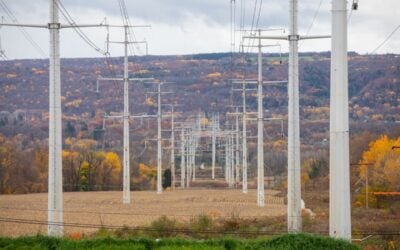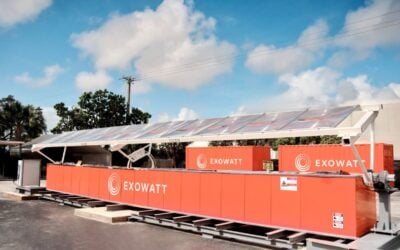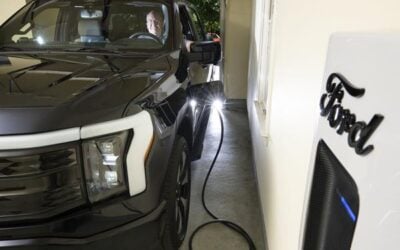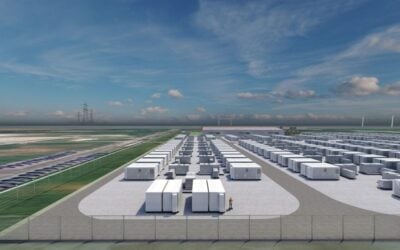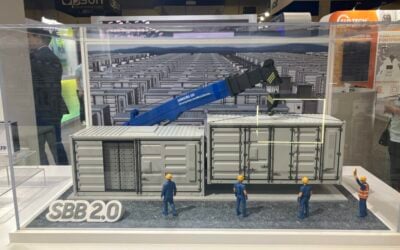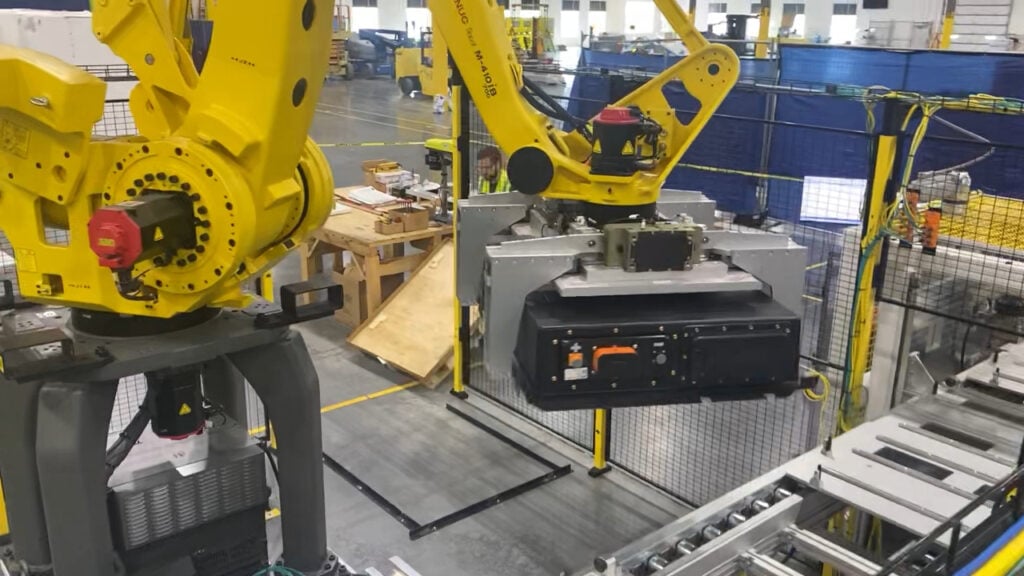
Fluence has taken a step forward in its strategy to “fully onshore production, as quickly as possible,” opening a new factory in the US.
The battery storage system integrator and clean energy software and services company announced this morning that production has begun at its new factory in Goodyear, Arizona.
The plant will manufacture enclosures and battery management system (BMS) hardware for its battery energy storage system (BESS) offerings.
Enclosures for products, including the recently launched SmartStack AC block BESS solution, will be manufactured using US steel.
Try Premium for just $1
- Full premium access for the first month at only $1
- Converts to an annual rate after 30 days unless cancelled
- Cancel anytime during the trial period
Premium Benefits
- Expert industry analysis and interviews
- Digital access to PV Tech Power journal
- Exclusive event discounts
Or get the full Premium subscription right away
Or continue reading this article for free
Fluence opened a battery module factory in Utah last September and has begun sourcing around half of the cells used in its US projects from a factory owned by AESC in Tennessee, which opened around three weeks ago, with the other half to continue to be imported from suppliers in Asia.
Even before new US president Donald Trump began his second term this year with a heavy emphasis on redressing the balance of trade with international partners, Fluence has been moving towards increasing the domestic content of products serving US demand.
Previous president Joe Biden had incentivised US manufacturing via tax credit incentives for both producing and deploying domestically sourced materials, components and equipment.
Shocks to global supply chains experienced during the COVID-19 pandemic reinforced views that localisation would ensure security of supply and timely delivery. While Fluence is active globally, with more than 20GW of storage deployed or under contract in more than 17 different markets, around half of its demand comes from the US.
“Our goal is to fully onshore production, as quickly as possible, to be able to serve the entirety of our US demand with products and components manufactured in the United States,” chief product and supply chain officer Peter Williams said of the new factory.
Fluence said today that in addition to the three in-house and third-party manufacturing sites mentioned above, it is sourcing other equipment including thermal management systems and inverters from factories within the US.
The company claimed that US onshoring plans had contributed to the investment of around US$700 million in manufacturing partnerships to date. While it did not reveal the annual production capacity of the Goodyear plant, Fluence said the Arizona factory would create 250 jobs.
“By rapidly expanding our access to US manufacturing, we’re helping our customers navigate complex global supply chain risks while reinforcing our commitment to delivering safe, reliable, and cybersecure energy storage systems at scale,” Fluence Americas president John Zahurancik said.
Fluence CEO: Domestic content strategy ‘resilient to multiple scenarios’
In a recent call to discuss quarterly financial results, Fluence CEO Julian Nebreda had noted that the remaining half of cells coming from suppliers in Asian countries including China remained exposed to price fluctuations and uncertainty based around trade tariffs.
The company lowered its revenue guidance for the year based on the impact of the US-China tariff policy, which at the time of the announcement included rates in excess of 150% on Chinese imports, since lowered for a 90-day period during which negotiations are expected to be ongoing, would have on customers’ projects.
On the other hand, Nebreda expressed a belief that relations with China would somewhat normalise.
The CEO also claimed that while Fluence began implementing its domestic content strategy around two years ago, geared toward eligibility to benefit from domestic content bonuses available through Biden-era policies, the company was “confident that future policy updates will continue to support local manufacturing.”
“Our discussions with regulators indicate a consensus for continued incentive for local manufacturing, which has created thousands of jobs to date. Our domestic content strategy is resilient to multiple scenarios, involving different tariff outcomes and levels of policy support for domestic production,” Nebreda had said.
Since that call earlier this month, moves have been made by the House Ways and Means Committee in Congress to end various manufacturing incentive programmes early and by the Committee on Energy and Commerce to repeal and rescind funding made available through Biden’s flagship Inflation Reduction Act (IRA).
SMA to assemble integrated power plant solution in US
Also today, Germany-headquartered solar PV and energy storage inverter manufacturer SMA Solar Technology (SMA), announced that it will assemble its factory-tested Medium Voltage Power Station (MVPS) product in the US.
MVPS combines solar or battery inverters with a transformer and medium-voltage switchgear for utility-scale solar PV or energy storage projects.
“Domestic integration helps shorten project timelines, reduce shipping complexities and may contribute to domestic content strategies under the Inflation Reduction Act, depending on how customers structure their solutions,” SMA America managing director Jay Arghestani said.

